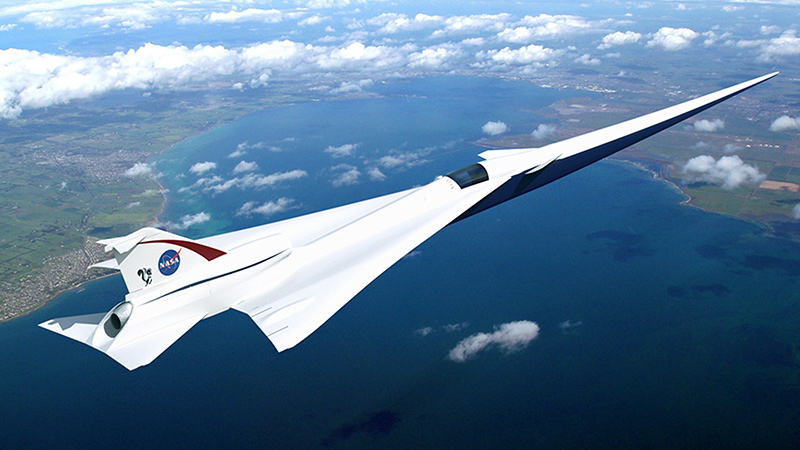Stay Up to Date
Submit your email address to receive the latest industry and Aerospace America news.
From 2017 AIAA Aviation Forum:
DENVER — Engineers from NASA and Lockheed Martin Skunk Works plan to huddle at the end of June at the contractor’s facility in Palmdale, California, to finish the preliminary design review of its X-plane concept that aims to soften the boom of supersonic jets enough to permit commercial flights over land.
NASA’s Armstrong Flight Research Center released a draft request for proposals with the latest update on this process June 1, outlining that this review will end Lockheed Martin’s contract with NASA on the Quiet Supersonic Technology, QueSST, X-plane concept. The data gained from that review will become part of a final request for proposals that will begin a competition to design and build a low-boom X-plane for NASA.
NASA posted initial announcements in February and March that this competition was coming. After the previous update of the draft request in March, NASA provided configuration data from QueSST to two firms who asked for it so they could consider competing for a contract, says Peter Coen, the commercial supersonic technology project manager at NASA’s Langley Research Center in Virginia. Coen declines to name the two potential competitors, but he says a final request for proposals is anticipated in August and a contract could be awarded at the start of 2018 to design and build the X-plane.
A top goal of NASA’s Commercial Supersonic Technology Program is to reduce the noise of a sonic boom to a less intrusive “sonic thump,“ Coen says. If U.S. lawmakers can be convinced that the technology created by NASA’s project makes the noise of supersonic flight less disturbing, that breakthrough could ease regulations and reopen opportunities for commercial supersonic flights over land.
The resulting X-plane would take off from NASA’s Armstrong Flight Research Center in Edwards, California, to study the real-life impact of the quieter sonic boom and do a community response study of people who live near the flight path, according to the draft request. Follow-up flights could include two years of studies about how the X-plane responds in a variety of conditions while collecting more response from nearby communities.
A sonic boom, sounding similar to thunder, can roll for 40 kilometers in the direction of both sides of the airplane as it flies, meaning it can affect people who live nowhere near an airport or the flight path of the supersonic plane. The FAA and regulators in Europe have banned supersonic flights over land because of that wide-ranging noise.
“We have proved that the basic technology is there; it’s feasible to create an aircraft that has substantially quieter sonic booms than I would have believed possible 10 years ago,” Michael Buonanno, deputy chief engineer for QueSST at Lockheed Martin, said during the AIAA Aviation Forum.
“We are ready to go to flight with this technology and open up a new segment for the market,” Buonanno said.
No X-plane designation has been chosen yet for the low-boom supersonic plane. “It’s our own design and specifications, so it’s going to be a really unique thing for us,” Coen says of the upcoming competition to build an X-plane.
About Tom Risen
As our staff reporter from 2017-2018, Tom covered breaking news and wrote features. He has reported for U.S. News & World Report, Slate and Atlantic Media.
Related Posts
Stay Up to Date
Submit your email address to receive the latest industry and Aerospace America news.




